Museums in Singapore shed 'atas' image but will need to go beyond novelty elements to draw the crowds
Museums here have reinvented themselves with immersive technology, family-friendly galleries and blockbuster festivals, drawing record visitors. But curators, volunteers and experts say the real test lies in whether Singaporeans could eventually see museums as more than one-off attractions.
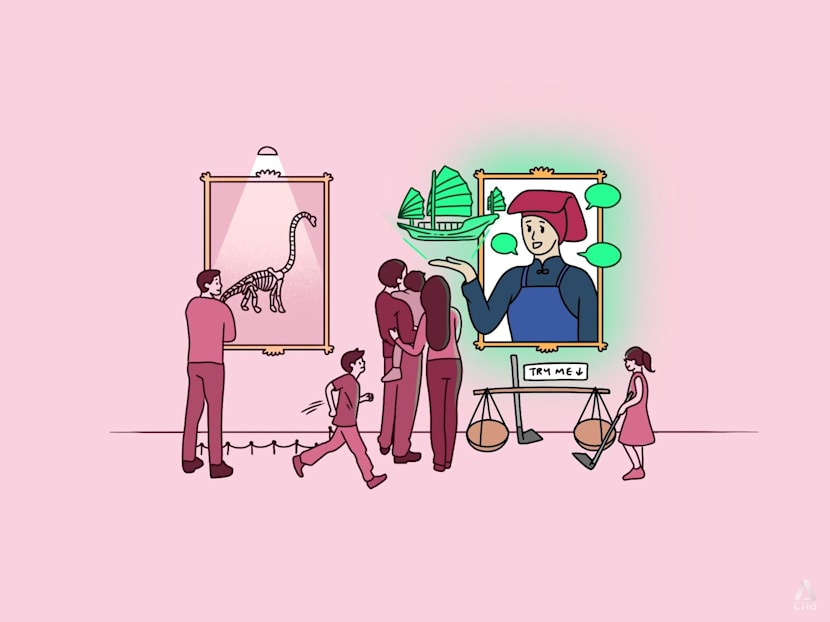
Singapore’s museum landscape has evolved into a dynamic blend of national art institutions, futuristic digital showcases and increasingly family-friendly spaces. (Illustration: CNA/Nurjannah Suhaimi)

This audio is generated by an AI tool.
On a weekend outing with her family last year, Ms Charleen Phor found herself trailing behind her toddler as he eagerly explored the colourful shophouses of the past and clambered into a cramped cargo hold at the Children’s Museum Singapore.
In a gallery where young visitors were exploring the journey of early migrants, her son peeked into a streetside barbershop and played a multimedia game where he could clean a digital Singapore river.
"I like the very open concept, where the children can explore at their own time and realise, 'This is where I want to park myself'," said Ms Phor, a programmes lead in her early 40s who has visited the museum at Coleman Street three times since its opening in 2022.
One of the newest additions to the local museum scene, the Children’s Museum Singapore – formerly the Singapore Philatelic Museum – is also the first here dedicated to children aged 12 and below.
Contrary to impressions of these institutions as hallowed halls of artefacts where visitors must maintain unspoken decorum at all times, the museum Ms Phor visited was filled with boisterous chatter and boasted interactive exhibits to climb over, see and touch.
For her, museums are not just a site for a fun day out but a way to spark connections between generations and pass down knowledge that may be otherwise forgotten.
"Some of the toys and exhibits are things that we played with during our childhood. So visiting the museum is a very good opportunity for us to share with our kid, 'This is what mum and dad used to play with'," said Ms Phor.
Beyond this new kid on the block, museums across Singapore are shedding their stuffy image of old by embracing technology and diversifying their programming.
And the approach appears to be working: Visitorship at national museums and heritage institutions has risen steadily in the past five years, peaking at more than 5.7 million in-person visits in 2024 – the highest on record since 2003.
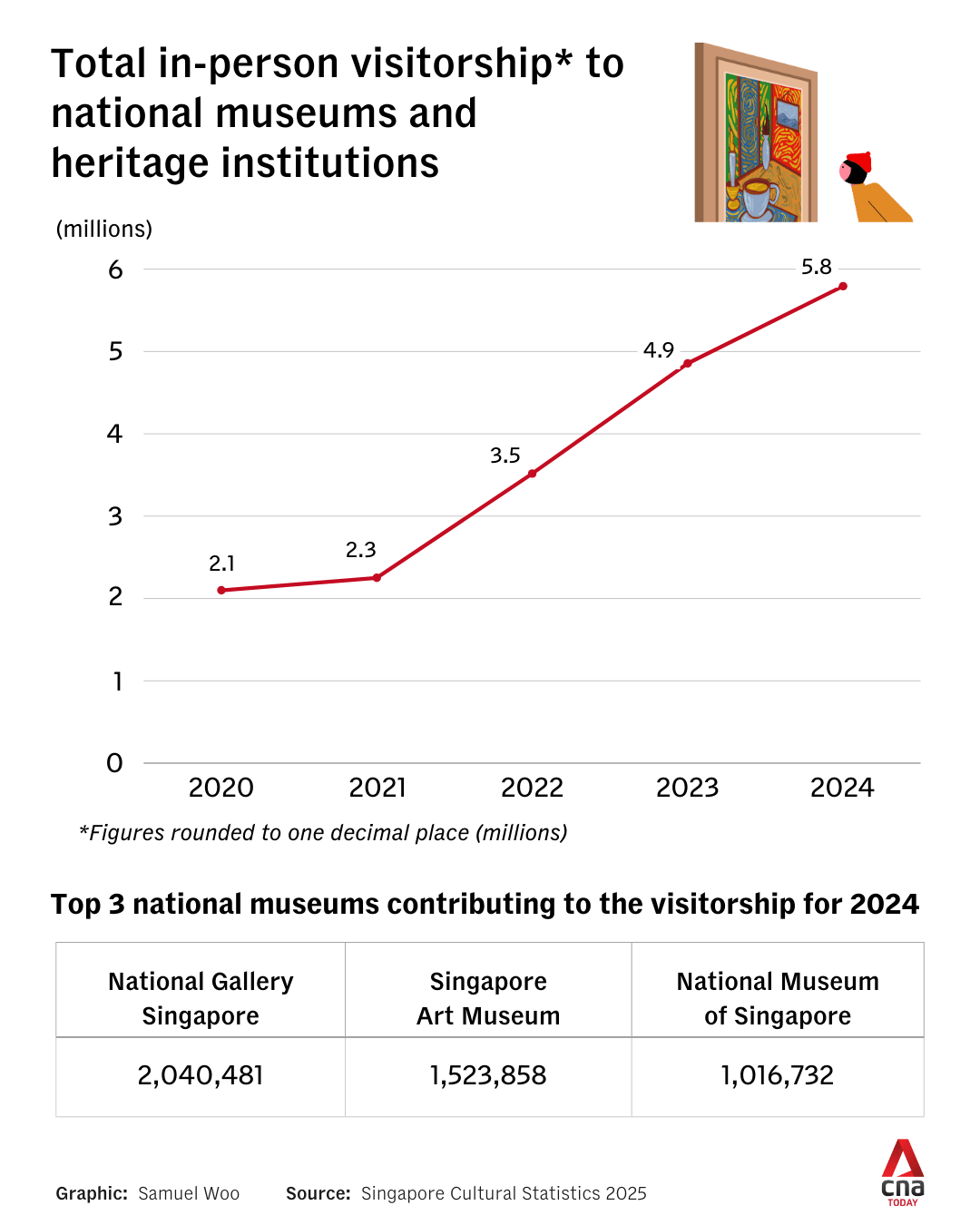
In the past 15 years, Singapore has seen the addition and refresh of several museums, including the ArtScience Museum at Marina Bay Sands which opened in 2011, National Gallery Singapore near City Hall MRT in 2015, and a new contemporary art space in the Singapore Art Museum (SAM) at Tanjong Pagar Distripark in 2022.
Since moving, SAM's footfall has grown by about 20 per cent, and the museum continues to see strong support from local audiences, especially youths, followed by families, said Dr Eugene Tan, chief executive officer and director of SAM and National Gallery Singapore.
Ms Chang Yueh Siang, an adjunct lecturer at NUS College and associate university curator at NUS Museum, said Singapore has done well in developing home-grown professional capacities in the museum landscape over the past two decades.
"We’ve moved from the early days of taking on international blockbusters to building our own blockbuster exhibitions," said Ms Chang, who cited the Gallery’s City of Others: Asian Artists in Paris, 1920s-1940s as one such landmark show. It borrowed works from many private collections and presented Singaporean artists like Liu Kang and Georgette Chen in a larger international context.
Beyond the growing number of museums and galleries, she attributed the more vibrant museum scene to significant government investment into audience development through outreach programmes such as the Singapore Night Festival and Singapore Heritage Festival.
But while both visitors and docents welcome the excitement of new openings and the steady rise in attendance, many also acknowledge a lingering uncertainty: Whether Singapore has truly cultivated a museum-going culture that can endure beyond the allure of novelty and blockbuster events – and what it will take to sustain that momentum.
WHAT'S ON AT SINGAPORE'S MUSEUMS
Today, Singapore’s museum landscape has evolved into a dynamic blend of national art institutions, futuristic digital showcases and increasingly family-friendly spaces.
According to the Ministry of Culture, Community and Youth’s (MCCY) annual Singapore Cultural Statistics 2025 report, total in-person visitorship under the Museum Roundtable crossed 9.3 million in 2024.
The Museum Roundtable – a collective of over 60 public and private museums and heritage galleries, including those not run by the government – was established by the National Heritage Board (NHB) in 1996 to promote a museum-going culture among Singaporeans and position museums as unique cultural destinations.
In 2024, some of the biggest draws included National Gallery Singapore, which saw over 2 million visitors, the Singapore Art Museum which was visited by over 1.5 million people and the National Museum of Singapore, which crossed over 1 million visitors.
Some cited the ArtScience Museum and National Gallery Singapore, which marks its 10th year in 2025, as game-changers for the local museum scene.
Professor Ute Meta Bauer, director of Nanyang Technological University's (NTU) School of Art, Design and Media, said the Gallery’s inauguration in 2015 marked a shift in perspective on the role of art and culture in Singaporean society.
"As a prestigious, centrally located museum housing the largest collection of Southeast Asian modern art, alongside the Singapore Art Museum’s extensive collection of contemporary art from the region, it has had a significant educational and cultural impact," said Prof Bauer.
In Southeast Asia, only Manila now surpasses Singapore in the number of public and private institutions focusing on art and culture, she added.
Dr Tan said the Gallery's visitorship has consistently grown over the past decade, and it has now hosted over 14 million local and international visitors over this period. From April 2024 to March 2025, the Gallery saw an "even split" between local and foreign exhibition attendees.
Where the Gallery is able to showcase the strengths of Singapore's national collection of artworks, the ArtScience Museum's success is in its wide programming that attracts different types of audiences, said Ms Chang from NUS College.
"Families will find teamLab's Future World engaging, pop culture fans will find their exhibitions of manga art or anime design appealing. There are often exhibitions that engage with scientific or environmental themes that are thought-provoking," she said.
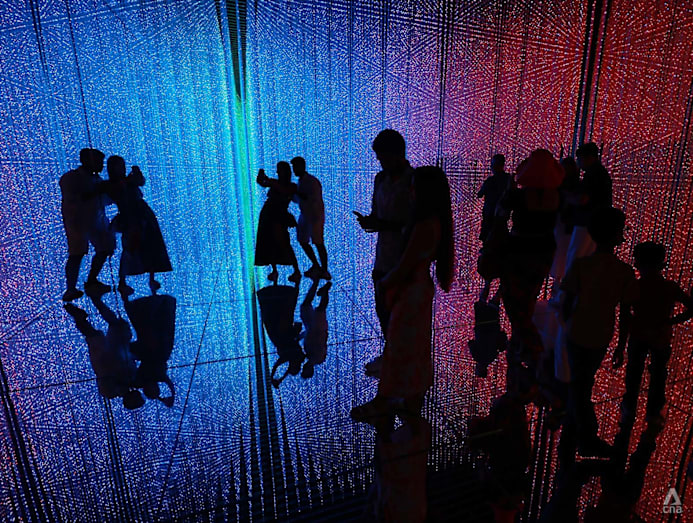
Mr Adrian George, ArtScience Museum’s director of exhibitions, programmes and museum services, said the museum has curated exhibitions combining "immersive experiences with opportunities for dialogue and reflection" in line with museum-goers worldwide seeking more than static art displays.
Over the past 15 years, it has staged internationally recognised exhibitions in showcases of legendary artists like Leonardo da Vinci and Frida Kahlo while supporting local and regional creators.
The ongoing SingaPop! 60 Years of Singapore Pop Culture created by Dick Lee, for example, mixes interactive and multi-media installations to explore evolving food, music, fashion and Singlish.
While the ArtScience Museum did not reveal its yearly visitorship, Mr George said the permanent exhibition teamLab Future World has attracted more than 4.5 million visitors since its inception in 2016.
Ms Nur Aishah Sekimin, a 31-year-old document controller and frequent museum-goer said museums have become popular among parents for their offerings of indoor family-friendly activities.
"Museums nowadays offer more digital exhibitions and they are more interactive as compared to my younger days, where we would stare at an exhibition and read the infographic provided. They even have maps or itineraries prepared (online) for the number of hours we have to spend in the museum," said Ms Aishah.
She visits museums three or more times a year with her two children. She said her son also raved about the Children's Museum Singapore after visiting it on a preschool trip.
Ms Mishelle Lim, a senior curator at the Children's Museum Singapore, said its interactive exhibits geared for play are part of the museum's design to be a "starter museum", for children to have a first positive encounter in and encourage them to venture into other museums.
"Ideally, it should not be just, 'I'm not a museum-goer, it's not for me'. We have to have very attractive programming in the first place to get them through the doors. And once they do, we see repeat visitors," she said.
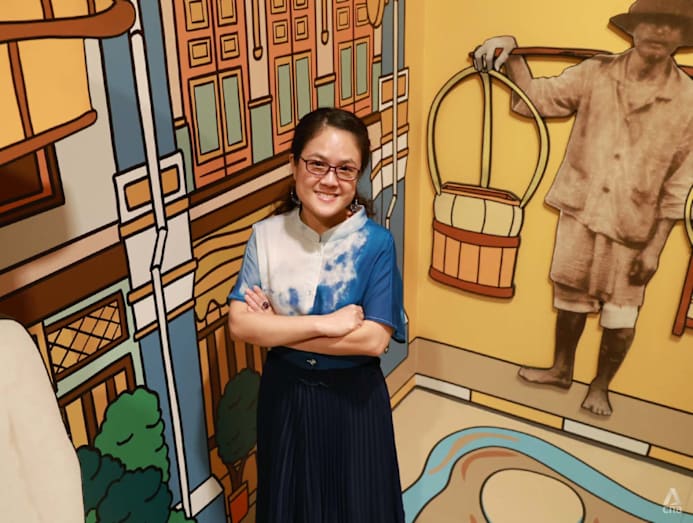
While Ms Lim grew up in a Singapore with fewer museums and traditional displays that invited quiet reverence, she wants the Children’s Museum Singapore to tackle serious topics in a playful manner.
"We want the children to be themselves. And you know it's good when the noise level is high," she said.
That philosophy comes to life in the museum’s current Into the Hawkerverse exhibition, where children can run food stalls or test their teh tarik-pulling skills in a digital game featuring a video of a real stall owner – all designed to foster appreciation for the skill and labour behind Singapore’s hawker trade.
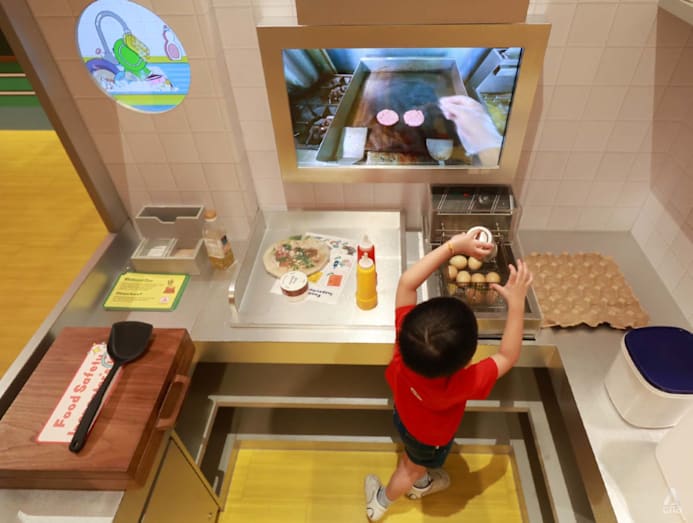
A MUSEUM-GOING CULTURE?
Mr Low Sze Wee, group director of museums at the NHB, said that its museums garner strong interest from Singaporeans and permanent residents, who typically visit museums as a group with friends and family.
NHB oversees the National Museum of Singapore, Asian Civilisations Museum (ACM) and Peranakan Museum, as well as three heritage institutions. Its subsidiary, HeritageSG, manages the Children’s Museum Singapore, Changi Chapel and Museum and Reflections at Bukit Chandu.
Based on NHB's Heritage Awareness Survey 2024, 94 per cent of respondents agreed that museums promote Singapore's understanding of heritage, while 91 per cent of respondents agreed that museums play a role in helping to develop a better understanding of the country's connection to Asia and the world.
"We believe that making museums accessible is the foundation to building a museum-going culture. As such, our museums have offered free entry to their permanent galleries for Singaporeans and PRs for more than 10 years. As for paid offerings, Singaporeans can now enjoy greater access to these by using their SG Culture Pass," said Mr Low.
The culture pass for Singaporeans aged 18 and above comprises S$100 in credits that can be used to offset ticket purchases for arts and heritage programmes such as cultural performances, workshops and museum exhibitions.
At the Lee Kong Chian Natural History Museum, the only one of its kind in Singapore, visitorship has increased steadily, with a marked increase in foreign visitors over the past two years.
Located at the National University of Singapore (NUS), the museum's regular visitors are mostly local students and families. It has reached out to over 105,000 participants through various school-based educational programmes since its inception in 2015. Its flagship Singapore Biodiversity and Adaptation workshop, for example, engages over 4,000 Primary 6 students annually.
Beyond families and students, however, the level of engagement at museums across Singapore appears less consistent.
Mr Dhevarajan Devadas who runs Historyogi, a social media account on Singapore history and heritage, said a museum-going culture in Singapore is still a "work-in-progress" despite more engaging offerings.
The 34-year-old public policy analyst said that high-profile and anniversary-related content tends to be popular, but more traditional history-focused museums rarely draw the same crowds.
Agreeing, Mr Muhammad Hafiz Rashid, who has volunteered with docent and guide group Museum Volunteers since 2013, said blockbuster exhibitions and festivals that are "Instagrammable" may get more feet through the door, but this does not mean people will return.
While Singapore is gradually developing a museum-going culture, the 32-year-old freelance storyteller noted that regular museum-going remains driven by niche groups with specific interests.
"The typical, average Singaporean is usually (attracted to a museum) because of programming like the Singapore Night Festival. People want to see the lights or installations, and since you're already there, then why not visit the museum."
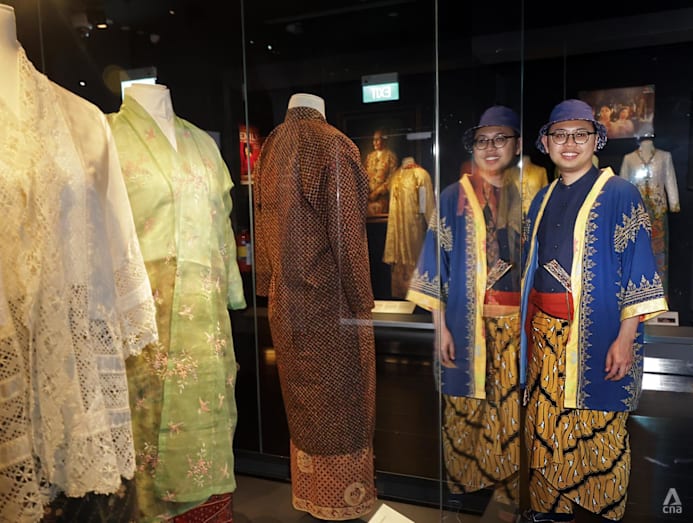
Mr Hafiz added that the concept and format of a museum is "very colonial" and thus visiting may not be as habitual to cultures outside of Europe.
"In a way, it seems like a very 'atas' (high-class) sort of thing. When people go for accessibility in entertainment, people go to amusement parks, libraries," he said.
Still, having seen more students, Gen Zs and millennials walk through museum halls, Mr Hafiz said that early exposure through schools and children-friendly programming may help museums feel less foreign.
Mr Ng Wee Liang, a 26-year-old university student who posts content about arts and heritage on social media, said permanent galleries remain attractive to tourists seeking historical context. However, locals like him gravitate towards eye-catching festivals or rotating contemporary shows that feel relatable.
He pointed to crowd-pullers such as the 2022 Doraemon-themed exhibition at the National Museum and the Studio Ghibli showcase at ArtScience Museum that ran till early 2025.
Given that national museums are often free for Singaporeans and PRs, Mr Ng said that cost is not the barrier in developing a museum-going culture.
"I think Singapore's museums are actually managed well, but the perception has to be changed. Most people think museums are just artefacts, or words besides old things. But that's not necessarily true, at least here," he said.
Nevertheless, there are signs things are changing, as docents noted that beyond rising visitor numbers, there is also greater interest in volunteering with museums.
Ms Garima Gemawat Lalwani, an American who has lived in Singapore for over two decades, has seen more Singaporeans sign up with Friends of the Museums, a non-profit organisation that supports museums here with guiding services.
When she began docent training in 2007, the organisation consisted mostly of expatriates, but more Singaporeans have signed up in the past five to 10 years.
While this points to a growth in public interest in museums, Ms Garima, who was a past president of Friends of the Museums, said she hopes more Singaporeans pay attention to museums that focus on local communities and their contributions to Singapore.
"My hope is that people will visit not only the larger museums, but also places like Changi Chapel and Museum," she said, noting that the latter is popular among many Australian and British tourists but remains less familiar among locals. The museum is dedicated to Singapore’s World War II history and features the stories of allied prisoners of war.
MORE SOPHISTICATED VISITORS
Accessibility is only part of the challenge in cultivating a museum-going culture. According to museum professionals, today’s audiences are more discerning than ever.
To stand out in a crowded leisure landscape, museums must keep pace with the evolving expectations of globally exposed locals and tourists arriving with world-class standards in mind.
Ms Lim from the Children's Museum Singapore said that museum-goers have become more sophisticated with Singapore's economic development and greater exposure to overseas attractions. This raises the stakes for exhibitions, especially in their use of technology and references to international pop culture.
Content creator Vins Too, 36, said that he is impressed by how Singapore's museums have moved away from traditional, fixed-artefact displays and embraced digital projections and soundscapes that allow visitors to "step into a story", but added that they could go even further.
An overseas experience he recalled fondly is the teamLab Planets in Tokyo which he described as "pure play and immersion". At this interactive art museum, visitors can walk through water bearing light projections, or sit in a mirrored room filled with flowers that seem to be floating in the air.
"I think Singapore's museums could definitely adopt more of this playful and interactive spirit. While we've made great strides in using technology, integrating more of these large-scale, digitally-driven installations could attract even younger audiences and transform the museum visit into a truly memorable, multi-sensory adventure," said Mr Too.
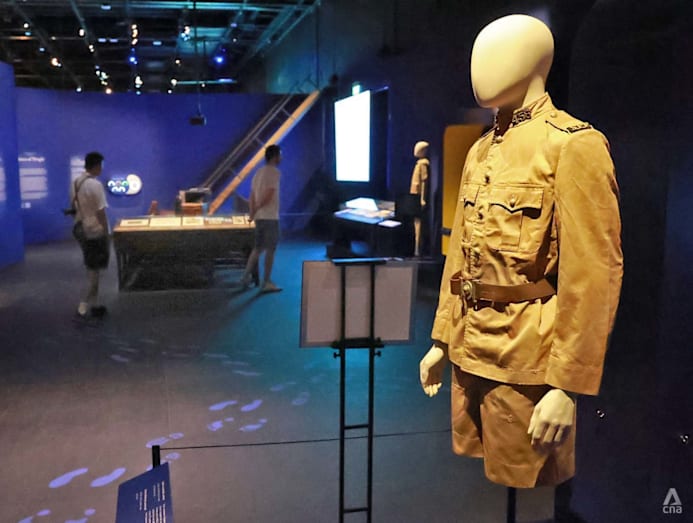
For Mr Ng the arts and culture content creator, one striking museum he has visited is the Museum of Occupation in Riga, Latvia, where the layout of the old Soviet Union building was used to give visitors an experiential look into the country's history. Latvia was once part of the Soviet Union.
"Signs are mounted on a fake electric fence, and when you keep walking and reading, the museum flow makes you go up to the second floor. When you look down, you see other visitors going in through the fenced-up area, and realise you're (in the position of) prison guards who looked at prisoners walking in a line," said Mr Ng.
Tourists who visited local museums told CNA TODAY they generally found the offerings comparable to, or even exceeding, what they had seen or experienced in museums abroad.
Ms Tapasya Kawshik, a 42-year-old artist, and software developer Anurag Jaiswal, 42, who were visiting Singapore from India with their two children, said they found ArtScience to be an exciting and tech-savvy mix catering to all ages.
"It's the first of a kind (for us). We haven't visited a museum like this, where they mix art and science together," said Mr Jaiswal.
But the couple added that London’s Natural History and Science museums offered bigger collections with more detailed explanations of the science behind exhibits.
Bulgarian tourists Rumen Velichkov, 25 and Ms Yoanna Yordanova, 26, also enjoyed visiting the ArtScience Museum during their four-day stop in Singapore despite initial concerns that it might be "gimmicky".
Ms Yordanova, who works in marketing, said Bulgaria could learn from Singapore museums' seamless user experience, saying she was impressed that she could buy tickets in "a matter of seconds".
French retiree Andre Chambon, 72, appreciated how National Gallery Singapore displayed artworks with more space between each other than in France, though he wished there had been a translated French guide to help him navigate.
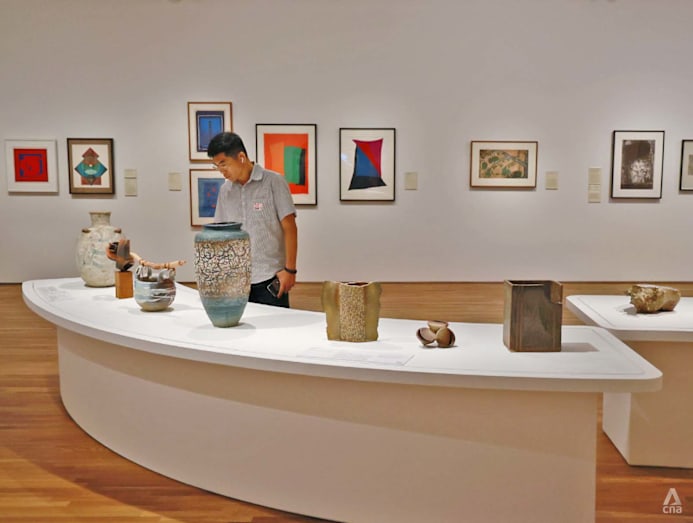
He visited the Gallery and the ACM on the recommendation of a tourists’ guidebook, and stumbled upon World War II interpretative centre Reflections at Bukit Chandu while on a walking trail.
With the aim of attracting tourists and encouraging local audiences to return, experts said a delicate balance must be struck between appealing to global trends and highlighting local culture and heritage.
Mr Devadas who runs Historyogi said he hopes that Singapore's museums might broaden the kinds of stories they tell, including those that may be "more complex or less often heard".
He pointed to the potential to highlight more of Singapore's pre-colonial history and the experiences of groups such as the Orang Laut. He also hopes that further steps will be taken to make content more accessible to those with visual and hearing impairments.
While it may be easy to use national museums abroad as a benchmark for Singapore’s, Ms Chang from the NUS Museum said the city-state can also learn from university museums overseas which may work with less resources but offer interesting modes of presenting living heritage and cultures.
She cited how one university museum in Thailand did not have the resources for an expanded gallery space but collaborated with a nature reserve to use onsite "living resources" such as different plant and animal species for display and pedagogy.
"This was really inspiring, because we’re not just looking at specimens and objects that are inactive and static, but it is a 'museum' that is contextual and 'alive'. Rather than specimens of fossils and skeletons behind glass shelves, we see them in their natural contexts," said Ms Chang.
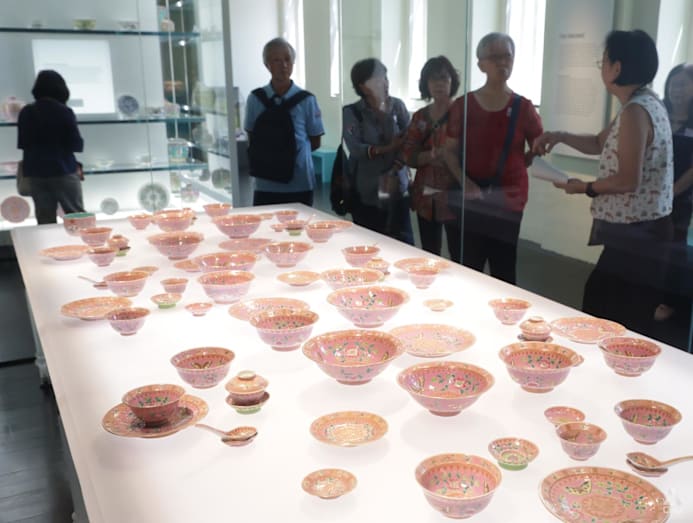
MUSEUMS OF THE FUTURE
As museums have moved in the direction of adopting artificial intelligence, augmented reality and virtual reality technology, many "conventional" museums need to adapt and deploy these new technologies to draw audiences, said a spokesperson from the Lee Kong Chian Natural History Museum.
But the museum has not deployed these new technologies yet, primarily because it will require a vast investment of resources and structural amendments to the space. However, there are plans to develop capabilities in this area in the near future.
While the public gallery and exhibitions may be a vital part of its identity, the Lee Kong Chian Natural History Museum said its focus for the future is to remain research-centred.
Prof Bauer from NTU agreed that museums’ "front-of-house" activities are as important as its "back-of-house" functions such as research, publications and capacity development.
She added that museums require extended commitment in terms of funding for collections and new acquisitions.
"They also need significant storage capacity and skilled staff for collection management and preservation. Collaborating with universities on scholarship and research into regional art similarly demands long-term planning," said Prof Bauer.
For practitioners on the ground, the challenge is twofold: keeping exhibitions world-class by adopting new technology while ensuring the skills and knowledge of the old are not lost.
Mr Rafi Dean, Senior Manager of Museum Services at the ArtScience Museum, said one future concern may include preserving the knowledge of artisans and craftsmen.
He pointed to a display of cathode-ray tube televisions from the 1980s and 1990s in the Singapop! exhibition, noting that many people may no longer know how to repair them since such electronic devices are no longer common.
"Some of my new hires, I have to coach them that this is how we did things 20 years ago. You have these technologies now, but you need to know how it was done back then so you can do it again if you need to," said Mr Dean.
Mr Low said NHB realises the need for its museums to constantly innovate to stay relevant, keep up with the evolving needs of the heritage sector and to connect with new audiences.
Its museums are thus revamped from time to time to explore new ways to tell stories like harnessing technology. For example, the Malay Heritage Centre is currently undergoing revamps and the National Museum recently reopened the first of its permanent galleries, featuring its newest immersive installation titled Singapore Odyssea: A Journey Through Time.
Accessibility and inclusion remain curatorial priorities. The National Museum's Reunion space, for example, is Singapore's first museum space dedicated to seniors, including those with dementia and mild cognitive impairments, and offers regular programmes highlighting familiar stories.
While youth engagement is a continuing challenge, Mr Low pointed to the Heritage Awareness Survey 2024 which found that 45 per cent of museum visitors were young people.
At National Gallery Singapore, Dr Tan said the museum has reimagined itself as "more than an exhibition space" with a regular line-up of tours, talks, workshops, family-friendly activities, and a biennial film festival spotlighting Southeast Asian cinema – though one key challenge it faces is the strong competition for visitors' time and attention with various lifestyle offerings in Singapore.
"For the Gallery, we aim to strike a balance, presenting exhibitions that advance scholarship and artistic excellence, while also creating experiences that feel approachable, engaging, and relevant to everyday audiences," said Dr Tan.
In the case of SAM at Tanjong Pagar Distripark, which is a distance away from the cluster of museums in the Civic District, Dr Tan said a challenge is giving people a meaningful reason to visit.
But its aim is to move beyond a traditional museum model and to bring the museum experience into the wider city.
Through SAM's public art initiative called The Everyday Museum, exhibitions in regional libraries and the Singapore Biennale, it brings contemporary art into neighbourhoods and shared spaces.
"When SAM’s former sites at the Bras Basah Road buildings closed for renovation, the museum went beyond its walls into community spaces. This lowered barriers to contemporary art and created new touchpoints for audiences who might not otherwise have visited a museum," said Dr Tan, who said that SAM has continued with this strategy till today to build new audiences for the museum.
Those who work in and volunteer with museums hope Singaporeans will see the breadth of institutions here as something to cherish.
"Inherently, museums are educational institutes, because we hold so much information, and larger museums that collect are kind of like historians. They're a great way to provide access to so much learning – like culture, art, even quantum physics," said Mr Dean.
Ms Lim from the Children's Museum Singapore hopes to see Singapore's museum-going culture grow from strength to strength and that visitors can appreciate the labour of love that goes into each exhibition, some years in the making.
"I'd love for Singaporeans to feel that museums are for them, not intimidating, too ‘atas’ or overly formal or dusty repositories. Instead, museums are a place of wonder, beauty and inspiration, a sanctuary you can escape to as often as you like," she said.














